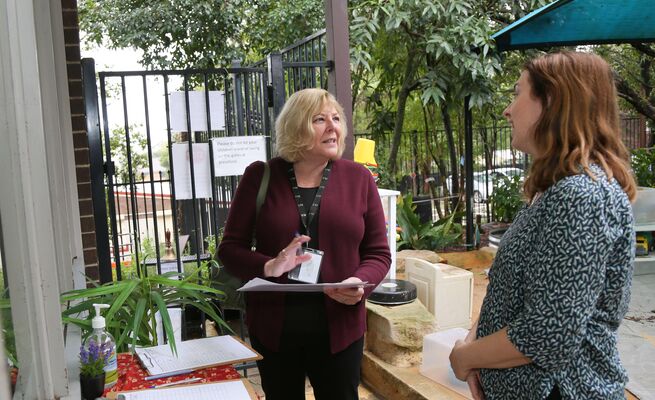Barriers to Inclusion
The impact of barriers to inclusion
Preschools are dynamic settings with many variables impacting on inclusive practice. Obstacles may exist or arise that unintentionally disrupt children’s access and participation, impacting on benefits from learning opportunities and developmental outcomes. In some cases, inclusion barriers may prevent a child from accessing a preschool altogether.
Our goal – inclusion for all children across every aspect of the program
Inclusive best practice enables children with disabilities and additional needs to be active participants across all aspects of the program on the same basis as their peers.
Key components of inclusive practice:
- continuously improved based on critical reflection,
- involves collaboration with families and other involved professionals
- requires attention to the needs of the individual child
- is embedded across the preschool program,
Inclusive practice leads to benefits and a strong sense of belonging for all children.
For related information see Inclusion and the EYLF (Early Years Learning Framework).
Defining barriers to inclusion
A barrier may be defined as any constraint in the preschool setting that prevents a child from fully participating in the program. Barriers may present in a variety of ways. A barrier may potentially lead to conflict between educators and parents around appropriate support in the preschool. Examples of barriers to inclusion may be:
- Limiting beliefs and attitudes of educators and/or parents about the capacity of all children to be successfully included in the program.
- A physical environment that does not meet the physical access, sensory or communication needs of all children.
- Inflexible routines or practices that are not responsive to children’s needs.
- Resources or equipment that do not allow all children to participate meaningfully.
- Lack of communication between parents, educators and other involved professionals leading to inconsistent approaches to supporting children.
- Policies or processes that may lead to exclusive practice.
- Expectations of children that are unrealistic for their current developmental level or are inconsistent between educators.
- Lack of confidence, skills and/or knowledge for team members.
Bridges to successful inclusion
- Identifying and acknowledging barriers is the first step to building bridges to successful inclusion. This is achieved through critically reflecting on all aspects of your program and practice. Take time to specifically consider how your preschool may be experienced by a child with developmental differences and their families. Don’t forget to reflect on this with all of your senses!
- As a team, decide what you would like to see change (set goals) and how you are going to make that change occur (plan). The Preschool Inclusion Readiness Plan is an ideal way to set and monitor preschool inclusion goals. Set goals that are measurable and achievable. Establish clear steps that you will take toward the goal, along with a timeline and allocation of who will be responsible for implementing each action.
- Finally set a date to review your plan. Consider what has and has not helped to address the inclusion barrier, why this is the case and what changes you need to make to the plan as you move forward.
Moving from barriers to building bridges to inclusion
Examples of barriers and bridges
| Situation | Barrier | Bridge |
|---|---|---|
Situation Some children find it hard to sit at group time and other children may become distracted. |
Barrier Group time content is of interest to children, they aren't sitting for the entire duration without the sensory input that some children need. |
Bridge Educators plan to provide physical movement in every group time. They offer fidget toys and wobble cushions for children to sit on, providing sensory feedback for children who need this sensory input and find sitting and attending difficult. |
Situation Educators are including a new child with an unfamiliar diagnosis. |
Barrier Educators do not have the knowledge or information to understand how to meet the needs of the child and provide appropriate supports. |
Bridge Educators identify professional development opportunities to learn about the diagnosis. They establish ongoing communication channels with the family and involved professionals to create a team approach and inform their practice. They focus on observing and forming relationships with the child. |
Planning for inclusion
| Steps from Barriers to Inclusion | ||
|---|---|---|
Steps from Barriers to Inclusion Step 1 - Identifying Barriers |
Step 2 - Building Bridges | Step 3 - Inclusion |
Steps from Barriers to Inclusion Identify the barrier/s to inclusion through reflection on all aspects of your program and practice. What is preventing all children from having full access to, and participation in, the program? |
Reflect and plan. What are your strengths and needs as educators? What can be changed in order to improve access and participation for all children? What goals do you have? How do you plan to achieve these goals? | Action the plan and give changes time to work. Review and adjust the plan if needed. What is helping? What is not working? What else could you try? |
Steps from Barriers to Inclusion |
National Quality Standard links for the content on this page
QA1 Educational Program and Practice
1.3.2 Critical Reflection
QA3 Physical Environment
3.1.3 Fit for purpose
3.2.1 Inclusive environment

